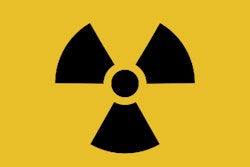The fear and frustration of reoccurring food safety issues has many retailers and manufacturers searching for a better means to quickly identify and isolate the cause of these outbreaks. Grocery retailers are especially focused on these issues, as they are typically the direct connection to the consumer. But, dependence on a multitude of suppliers—with varying levels of supply chain sophistication—adds to the complexity. Turning to technology to manage traceability of food ingredients is increasingly essential.
However, manufacturers and retailers are discovering that choosing the best-suited platform can be confusing. Some are evaluating the nascent technology, blockchain, as a possible tool for traceability. A highly publicized example is IBM’s Food Trust initiative with Walmart, a platform designed to enable Walmart to quickly identify the specific source of a problem or recall. While this is initially being tested with leafy greens, it may be expanded. Fear that the retail giant may require compliance in the future, has caused some suppliers to question their current traceability applications.
The bigger question, though, is why are grocery retailers feeling compelled to mandate specific technology on their food suppliers and manufacturers? Food manufactures are considering quickly adopting blockchain in order to receive the capabilities required to isolate suspect products and ingredients. However, before manufacturers spend both time and resources on this technology, it is important to determine whether this solution is truly fixing the problem or is being fueled by media hype—rather than sound evaluation of functionality and capabilities.
A Closer Look at Costs of Recalls
Outbreaks of E.coli receive extensive media coverage, creating fear among consumers, retailers and manufacturers. That is just one example of the contaminates that can wreak dangerous and costly havoc. The Center for Disease Control estimates that each year, roughly 1 in 6 Americans (or 48 million people) gets sick, 128,000 are hospitalized, and 3,000 die of foodborne diseases. The lost wages, lost productivity, medical costs, hospitalization and loss of life from foodborne disease cost the nation up to $77.7 billion a year, according to an Ohio State University study. That figure does not include the costs to the manufacturers and retailers.
Product recalls are some of the greatest financial risks Food & Beverage (F&B) companies face. A joint study by the Grocery Manufacturers Association, Covington & Burling LLP and Ernst & Young found that for most F&B companies, a recall can cost as much as $30 million. That figure includes sales losses and direct recall costs.
The report also spotlights some staggering examples. In 2010, a recall of shell eggs from one egg producer cost the entire shell-egg industry over $100 million in a single month. In 2009, salmonella contamination of peanut butter cost American producers of products containing peanuts or peanut oil a shocking $1 billion. These extreme cases provide strong motivation to manufacturers to track and trace sources of ingredients quickly to stop the distribution of tainted ingredients through the extended value chain.
Additionally, food recalls have increased by 10 percent since 2013, research shows. FDA leaders say the rise is not due to increased negligence among suppliers or food manufacturers, but from greater scrutiny and crack down on unsafe food practices. As inspection, detection and reporting policies improve, the number of recalls is likely to continue creeping upward, challenging manufacturers to examine their traceability practices and ramp up improvements.
How Technology Helps
Technology provides tools to help track and trace origins of ingredients quickly and accurately, so containment of adverse quality events can be coordinated and executed quickly across the supply network—in some cases preventing the need for recalls before they are needed. Technology also helps increase the efficiency of a “containment” or recall if one is required—narrowing the focus, identifying specific batches, isolating the products, and limiting the impact of the recall as much as possible, without jeopardizing safety. Quickly identifying and locating the actual lots or affected batches of product helps to reduce cross-contamination and the likelihood of spreading pathogens through contact with machinery or equipment.
Modern Enterprise Resource Planning (ERP) solutions, purpose-built for the F&B industry, must contain Internet of Things (loT)-tracking capabilities. Further, network-based cloud solutions must work hand-in-glove with modern ERPs, coordinating “containment” communication and activities across the vast supply network to quickly quarantine suspect products and materials. Use of mobile applications in conjunction with a network-based solution offers a practical way to accrue chain of custody, as well. Preventing tainted product from entering and traversing the supply network, as well as communicating to customers if or when such an “escape” occurs requires fast, efficient and structured communications with the supply chain participants.
Modern loT-tracking, combined with network-based supply chain traceability, is essential in tracking and locating suspect ingredients and isolating problems. For this application to be effective, though, manufacturers must properly define loT based on the level of risk an ingredient presents. The manufacturer can choose to track at a very broad view, such as capturing and recording an individual truck load as a single lot. Or, the manufacturer can opt to track at a more granular level and record the shipments of fresh ingredients arriving by pallet, time and day. Some manufacturers see the value of tracking ingredients to the farm-level, especially if the resulting products are marketed as organic, non-GMO or free-range.
The flexibility gives manufacturers the ability to tailor the loT-tracking application to the needs of the organization, weighing the benefits versus the costs. Using a supply network solution helps provide evidence of chain of custody, lending proof to support the marketed attributes. The flexibility inherent in such solutions gives manufacturers the ability to tailor the loT-tracking application to the needs of the organization, weighing the benefits versus the costs.
If a recall must be issued by the brand owner, the system will be able to quickly determine what products may be in jeopardy, if the suspected resources are in transit from suppliers, if they are in production on the plant floor, in the warehouse, or if any products were shipped to the customer. Products that were already shipped can be traced, so the customer can be notified quickly—and with relevant loT-tracking and packaging identifying details.
Reducing the uncertainty and worry associated with a recall is important too. Reliable tracking helps the customer feel confident that the threat is contained and that the action was swift and decisive, important for protecting the brand. Traceability is a necessary feature that tech-savvy food manufacturers have required of their ERP solutions and the connected supply chain network.
Is Blockchain a Better Answer for Manufacturers?
Unfortunately, food suppliers and manufacturers are sometimes less than vigilant about their procedures for loT tracking. They may have stalled deployment, neglected to adopt track and trace modules within their ERP, as well as network-based solutions for coordinating across the supply chain. Without these tools, response to an adverse quality event will be slow, inefficient and manual. Data is often in multiple systems, including Excel spreadsheets. Responsibility for locating product may be distributed across partners in the supply chain. Communication is usually via phone, email and fax. Frustrated with these challenges, they may wonder if blockchain can be a cure-all for their traceability pains.
Also, some manufacturers may be driven to experiment with blockchain because of curiosity, the fear of being late adopters, or even ambitious desires to address security threats. New technologies, once the initial hype cycles settle, need careful vetting to understand true benefits, best use-cases, and what vertical industries strategically align.
At its simplest, blockchain is a decentralized ledger capable of recording transactions and storing the data in a way which prevents it from being changed at a future point. It was initially adopted for its financial implications, but the potential application in the supply chain for transaction details was also identified by advocates. blockchain provides a neutral, open platform, not requiring a third party to authorize transactions. Instead, a set of rules provides the groundwork for all transactions, with all participants being required to comply. Hence, some enthusiasts say blockchain is more secure and tamper-proof than other traditional platforms. However, how blockchain can be holistically adopted in the food manufacturing and the supply chain network is still being debated. Many experts consider blockchain to be early in its development cycle, with a long way to go before it is considered a mainstream technology choice.
For most food manufacturers, the solution they need already exists. The functionality, embedded in modern ERP solutions coupled with a network-based cloud solution, may not have the current intriguing allure of blockchain, but it has unquestionable proven success, is hardened through years of vigorous usage, and is accessible today across a myriad of partners, suppliers, logistics providers and carriers. Adopting capabilities that are available in current solutions will help manufacturers gain meaningful insight and control today, without the delays and uncertainty associated with blockchain.
Advice for the Risk-Adverse Manufacturer
Food recalls remain a major threat, demanding attention of brand owners and manufacturers as they try to retain—or regain—the trust of consumers. Fortunately, proven technology exists to help track and trace ingredients through the product cycle, from arrival in the plant to warehouse and shipping across the supply network. Using loT-tracking functionality, combined with a network-based cloud traceability solution, manufacturers can quickly respond to recalls, taking swift, efficient and decisive action, while minimizing impact both to consumers and to brand owners. While some are looking to blockchain technology to test the solution’s effectiveness in supply chain tracking, there is no consensus on potential best practices yet. Companies that want a proven solution today can turn to modern ERP solutions with networked supply chain capabilities to track and trace functionality.
Mike Edgett is Director of Industry and Solution Strategy, Food and Beverage, at Infor.






















